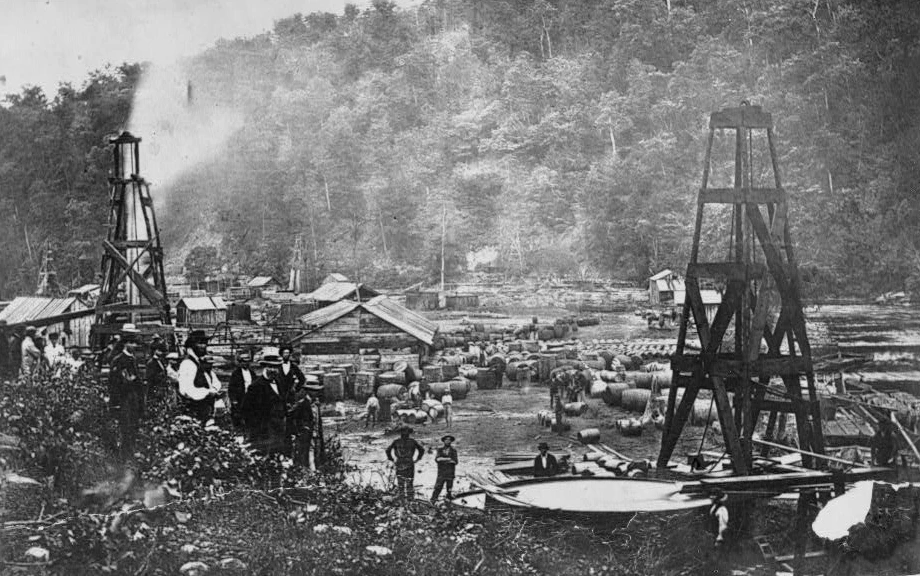The Great Strike at Benninghoff
“Oil Intelligence,” The Rochester Evening Express, March 14, 1866

The following from the Reno Times gives the best account we have seen in print, of the late greatest oil strike in the Venango oil region recorded in several months:
This well promises to be the event in oildom for some time. It is on the Frothingham lease, which is situated at the upper end of the tramway and extends up the right side of the ravine. The land interest and royalty of one half, are vested in the Bennehoff Run Petroleum Company, and the remaining half owned by the Harkins Well Company, composed of Harkins & Mallory, L. D. Clapp, Pulver Estate, S. J. Ross & Co., Cheney & Moore, R. C. Collen, J. J. Osborne and _ Frothingham. J. W. Early is Superintendent of the latter Company. On the same lease, an excellent pumping well has been in operation for a considerable time and is still yielding about 80 barrels per day.
On Thursday last, pumping was commenced in No. 22. There proved to be very little water in the well, not more than five barrels having been followed thrown up together, when the oil immediately followed. The pumping only continued about ten minutes, when the well began to flow. It was claimed as a good strike of three hundred barrel well on Friday last. On Saturday it was pumped about half an hour. On Monday, likewise, after which the sucker rods were drawn, it immediately commenced flowing at an astonishing rate.
New wells, especially large ones, are subjects of astonishment, rather than measurement, even to the most experienced. Large flowing wells generally produce much more oil during the first three or four days, or during the first rush, than afterwards. It is seldom that an opinion upon the amount a new well is producing is sustained by subsequent facts. Five-hundred-barrel wells generally turn out but three, and so with other quantities in smaller proportion.
The reader, in this instance, must be satisfied with the opinion of others, upon the quantity of oil being yielded. But it is certain that when visited yesterday, it was pouring out at a rate which would have excelled either the United States or Pool Wells of Pithole in their palmiest days. The flow is steady and forcible, spouting from the mouth of the pipe, in a straight line, from five to eight feet, giving the spectator the impression that it is ejected with great force. The volume of gas is also great. Two board box pipes, about twenty feet in height, have been erected over the covered tank, into which it flows. From each of these arises a constant volume of gas, so thick and black as to resemble smoke from a chimney.

The Superintendent claims [that] during the first twenty-four hours, [it produced] twelve hundred barrels. Several gentlemen of much experience in the oil territory visited it yesterday for the first time. After the usual period spent in discussion and investigation, pronounced it at least “a thousand barrel well.”
